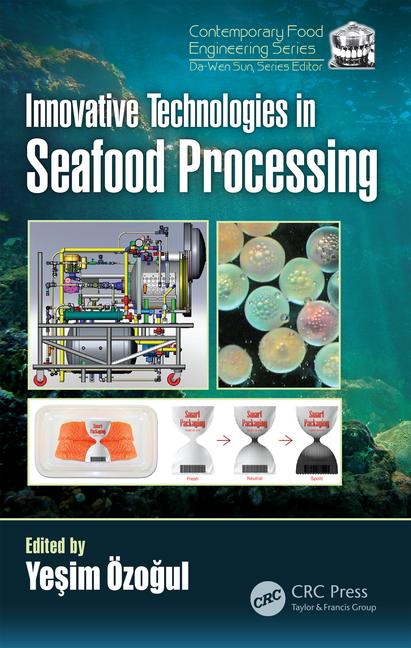
New offerings designed to withstand harsh applications with exposure to corrosive agents and/or frequent wash downs.
Photo courtesy of Raymond Corp.
Photo courtesy of Raymond Corp.
Just like a lift truck on a bustling dock, the material handling equipment market itself is in constant motion.
Suppliers to the refrigerated and frozen food processing and cold storage warehouse industries say new developments make this critical machinery more powerful, productive, durable and operator–friendly than ever before.
“We’ve developed a new generation of lift trucks,” notes Keith Allmandinger, senior manager of marketing for Komatsu Forklift U.S.A. Inc., Covington, Ga. “Our new offerings feature increased performance, power, and reliability while they reduce maintenance and service time - and therefore, operating costs.”
More power to you
Some of the industry’s latest improvements have a big impact - though they may not be immediately obvious. For example, suppliers Komatsu and Jungheinrich Lift Truck Corp., Richmond, Va., have focused on new power units.A dual supplier of both electric and internal combustion engine units, Komatsu says it took a “Total AC” approach to its latest line. The company’s new BBX50 Series line features six heavy-duty lift trucks ranging in capacity from 4,000 pounds to 6,500 pounds. Allmandinger notes that each four-wheel vehicle features an AC drive, AC hydraulics, and AC-controlled power steering.
“Although today’s engine-powered forklifts have extremely low emission levels (as mandated by the Environmental Protection Agency), there still are a great many users that prefer the quiet dependability of an electric forklift,” says Allmandinger. “For those people, Total AC - like the system used in Komatsu’s BBX50 - is an excellent alternative. It offers both powerful performance and energy efficiencies not available in a previous generation of electric forklifts.”
Elsewhere, Jungheinrich says a proprietary three-phase AC technology powers its new EFG 425-430 counterbalanced lift truck. The four-wheel offering has lift capacities from 5,000 pounds to 6,000 pounds. Class I Product Manager Jeff Bowles describes the unit as “whisper quiet” and emission-free compared to internal combustion (IC) engine models.
Adds Bowles, “The EFG 425-430 provides up to 15 percent greater energy efficiency than trucks with shunt-wound DC motors. Moreover, with no brushes or springs to contend with, truck maintenance expenses are greatly reduced.”
Jungheinrich notes the new EFG 425-430 model is scheduled for service every 1,000 hours, whereas others recommend 250- to 500-hour service intervals for their electric trucks and 250-hour service intervals for IC trucks.
Less space, more output
Of course, it’s one thing to reduce downtime. Another approach to increased productivity involves additional capacity - as in fitting a warehouse with more aisles in the same space.Landoll Corp., Marysville, Kan., says its new Bendi B3 VNA forklift can operate in aisles under 6-feet wide.
“This unit already is popular in several freezer warehouse operations around the country,” says Sales Manager Ed Campbell. “For starters, the Bendi B3 offers a seated operator position for greater comfort. The unit’s 200-degree, front-end articulation also makes it easier and faster to load and unload racks. It also offers single, front-wheel drive and steering to provide excellent traction and smooth inching motion - all with less steering effort - in tight situations . . . Freezer operators using the Bendi truck can freeze up to 50-percent more product with no additional operating costs.”
Narrow Aisle Inc., Dallas, says its new Flexi G4 forklift also is designed for tight spaces - as narrow as 3-feet wide plus the depth of the pallet.
“It is capable of picking both sides of the aisle from either direction and can actually leave the aisle to unload trucks at the dock,” notes Jeff Fisher, national sales manager. “By decreasing the aisle width - by 30 percent to 50 percent when compared to reach trucks and conventional lifts - the user significantly increases cubic utilization, with up to 30-percent more storage capacity.”
Handling loads like a counterbalance forklift, the Flexi G4 (also with seated operator position) can lift up to 2,000 pounds to heights of 354 inches, Fisher notes.
Tough enough
While lift capacity is one measure of strength, temperature-controlled plant and warehouse operators also are interested in durability in cold and corrosive conditions. Among suppliers addressing that issue are Hyster Co., Greenville, N.C., and Raymond Corp., Greene, N.Y.“We now offer a broad range of pallet trucks designed for extreme and corrosive environments and we believe that protective features of the Extreme Corrosion Package extend the life of the pallet truck and significantly reduce cost of ownership,” says Jeff Leggett, Raymond’s pallet truck director.
“This innovative package - with its galvanized frame, parts and linkages - is built to withstand the harshest applications, where trucks are subject to corrosive agents and frequent washdowns.”
Raymond’s Extreme Environment Corrosion Package is available on the company’s Model 102XM, a 4,500-pound-capacity walkie pallet truck; Model 8300, a 6,000-pound-capacity walkie pallet truck; and Model 8400, a 6,000-pound-capacity end rider pallet truck.
Also taking it to the extreme is Hyster, which is publishing a new brochure on temperature-controlled environments.
“Refrigerated and frozen storage applications are very rough on lift trucks,” says George Marshall, manager of warehouse sales development. “The equipment must stand up to a wide array of demands - from dock environments with rough floor surfaces, to the cold storage and freezer areas. . . . This type of application and environment is common and has been a major problem for this industry over the years and a major concern for lift truck manufacturers. The bottom line is that food processors and warehouse operators cannot tolerate truck down time.”
Hyster offers environmental packages designed for multiple temperature ranges for nearly all of the company’s electric lift trucks. These include Class I counterbalanced electrics and Class II and III warehouse electrics. Hyster’s Cooler-Freezer package features truck components (including oils, paint, linkage pins and axles, switches, heaters and more) designed for operation in 0
Boost comfort, productivity
No less important than equipment are a company’s employees - working on the dock and in the freezer. Food processors and cold storage warehouse operators need to consider their workers’ level of comfort and safety. Suppliers addressing this issue include Atlet USA, Anaheim, Calif., and Crown Equipment Corp., New Bremen, Ohio.Among Crown’s latest offerings is the RR 5275S reach truck (AC motor, AC traction control), which now features . . . a seat.
“In these high throughput areas, operators are often on their feet 10 hours a day, so anything we can do to improve their comfort - such as adding a seat - will enhance their productivity,” says Product Manager Maria Schwieterman. “Competitors are still trying to catch up to our standard reach truck model in terms of performance. The seat - as well as other ergonomic, safety and performance enhancements - makes the RR 5275S unmatched in its class.”
Last fall also saw Crown roll out ThermoAssist and ThermoAssist+ to boost operator comfort and safety. Designed for freezer reach trucks, ThermoAssist includes pad heaters for the back and arm, a console enclosure and a mast air deflector that redirects airflow away from the operator.
Additionally, ThermoAssist+ provides warm air to the vehicle’s multi-task handle and steer tiller through adjustable vents. A leg and foot warmer - available on certain models - directs heat to the operator’s feet and lower legs.
Atlet takes operator comfort to the next level with in an enclosed Freezer Cabin Reach Truck.
“While every operation is different, in most cases, bottom-line profits went up after integrating Freezer Cabin equipment into a cold storage warehouse,” says Tim Blackwell, a cost reduction specialist. “Certainly when the operation involved moving full pallets from one location to another, the cost savings were dramatic. While initial purchase cost of the heated cabin truck is more, the cost was recovered in a matter of months through (1) labor cost savings, (2) reduction in product damage, (3) staff turnover costs and (4) personal injury accidents.”
Blackwell says labor savings come from eliminating unnecessary “warm up” breaks, which typically equate to higher overtime costs. Most companies pay operators for a break in the morning and one at lunch, he notes. However there is an additional six hours in an eight-hour shift that can be impacted by warm-up breaks. On average, most operators take 15 to 20 minutes per hour to warm up, which can lead to between 1.5 to 2 hours of lost productivity per operator per shift.





